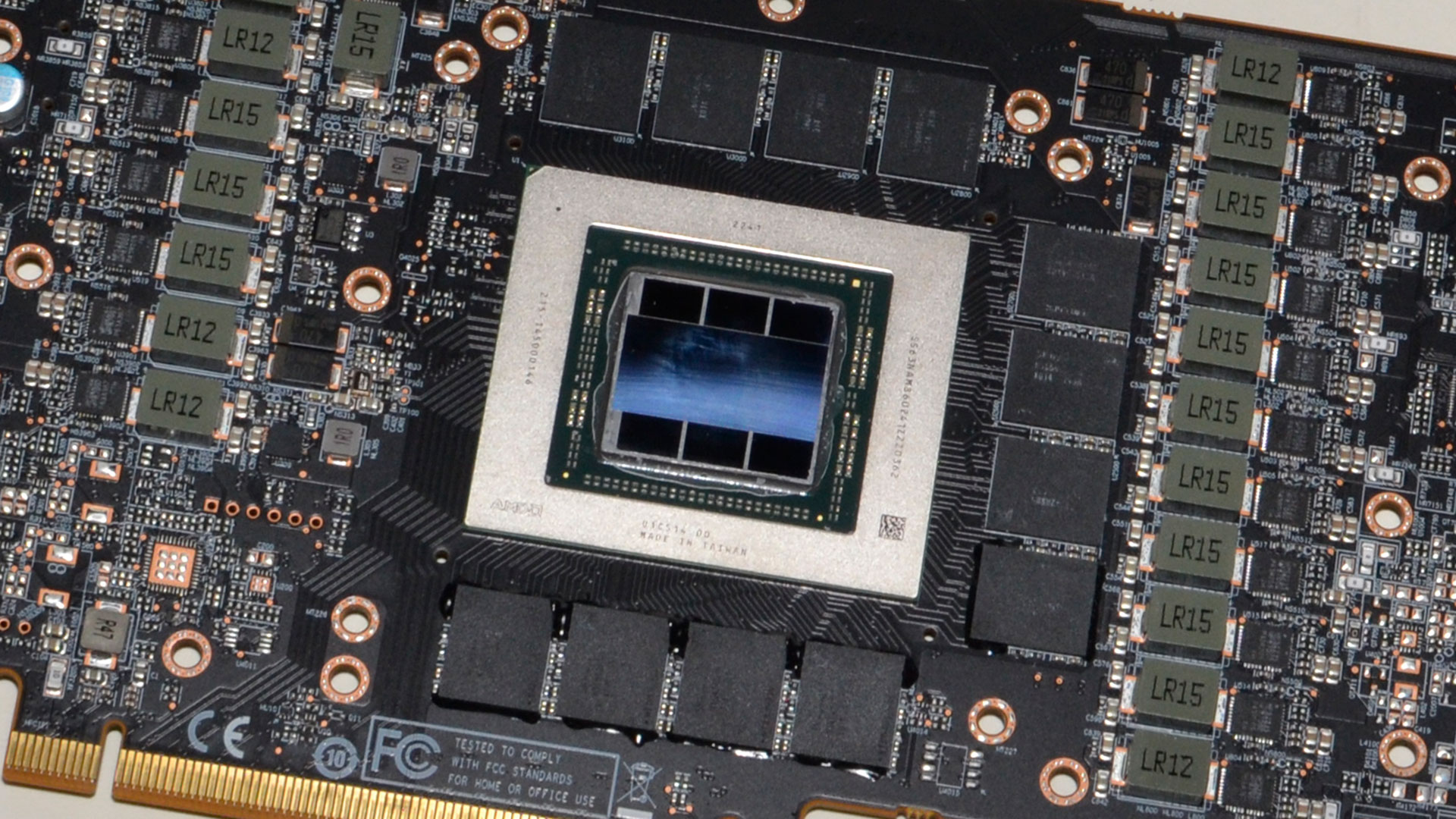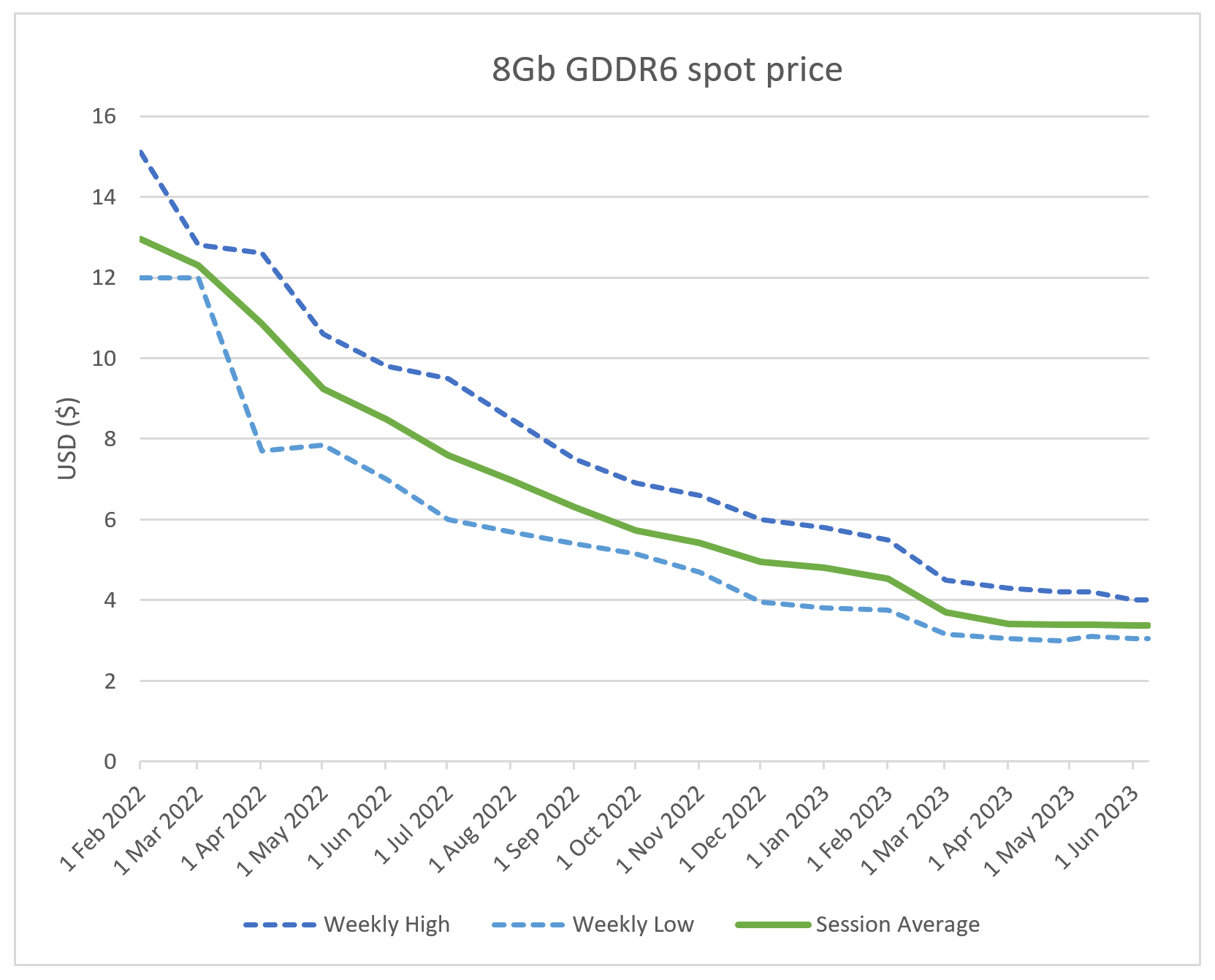
Due to the rapidly dropping demand for graphics cards in recent quarters, coupled with the end of the component shortages of 2021, prices on GDDR6 memory have plummeted. As noticed by 3DCenter.org, spot prices of GDDR6 decreased to less than a quarter of what they once were during the past 1.5 years. At present, 8GB of GDDR6 now costs $27 on the spot market. That certainly raises the question of why both AMD and Nvidia have opted not to install 16GB or more memory on many of the best graphics cards.
Back in February 2022, an 8Gb GDDR6 chip (1GB) cost about $13 on the spot market. That's according to data from DRAMeXchange, a market intelligence firm, compiled by Reddit user -Balance. Right now, an 8Gb IC costs $3.364, so 8GB of such memory costs roughly $27 if you buy it on the spot market.
Of course, buying off the spot market is something that big add-in-board manufacturers rarely do as they have long-term supply contracts with companies like Micron, Samsung, and SK Hynix. Contract prices tend to differ from spot market prices, in the positive direction (meaning, contracts cost less). Furthermore, vendors can't just buy any GDDR6 chip since the GPU vendors (AMD, Intel, and Nvidia) support very specific DRAM ICs with their graphics processors, with the supported memory IC types flashed into the firmware.

Given the spot prices of GDDR6, equipping a graphics board with 8GB of memory cost at least $104 in early 2022 — a sizeable amount of money. But $13 per 8Gb GDDR6 chip was probably the highest price in years, as demand for graphics cards was growing steadily since Q2 2020 and peaked in Q1 2022, according to Jon Peddie Research.
Sales of graphics cards have been on a downward trend since the first quarter of last year, and similarly demand for GDDR6 SGRAM along with its spot prices has dropped. Despite lower GDDR6 prices, both AMD and Nvidia have opted to equip their latest midrange offerings — RTX 4060 Ti and RX 7600 — with 8GB of memory. Nvidia has a 16GB variant planned, but that won't arrive until next month.
We do need to consider that a $27 increase in the bill-of-materials (BoM) can translate into double that for the retail price. That would make a 16GB card cost $54 extra (give or take). Also, the above IC prices are for 8Gb ICs, but modern GPUs are using 16Gb ICs (2GB each) — that's necessary to get 8GB on a 128-bit interface with just four chips. However, we assume 16Gb IC prices are generally tracking the 8Gb IC prices.
Ultimately, equipping an AIB with 16GB of memory can be costly, even today, especially if you want to be flexible in terms of price. 8GB on sub-$300 cards like the upcoming RTX 4060 and the RX 7600 makes more sense, but it's tough to take on the substantially higher priced models.
There are other considerations as well. Adding memory chips to both sides of a graphics card PCB adds complexity to the design. Another point to consider is that when AMD and Nvidia made design decisions about their Navi 33 and AD106/AD107 GPUs, that was probably sometime in 2020. Back then, demand for graphics cards was increasing and so were GDDR6 prices, so they opted for a 128-bit bus. That saved die area and made 8GB of onboard memory the default configuration for these midrange GPUs.
Since 2020, things have obviously changed a lot. The reduced GDDR6 and GDDR6X prices mean that both AMD and Nvidia should be able to hit slightly lower MSRPs for their Radeon RX 7600 and GeForce RTX 4060-class offerings. Alternatively, with the high asking prices of the latest generation GPUs, doubling the VRAM should be a viable option. Unfortunately, outside of the upcoming RTX 4060 Ti 16GB, graphics cards with double the VRAM (two 16Gb chips per channel on both sides of the PCB) are usually reserved for the more lucrative professional GPU market.







